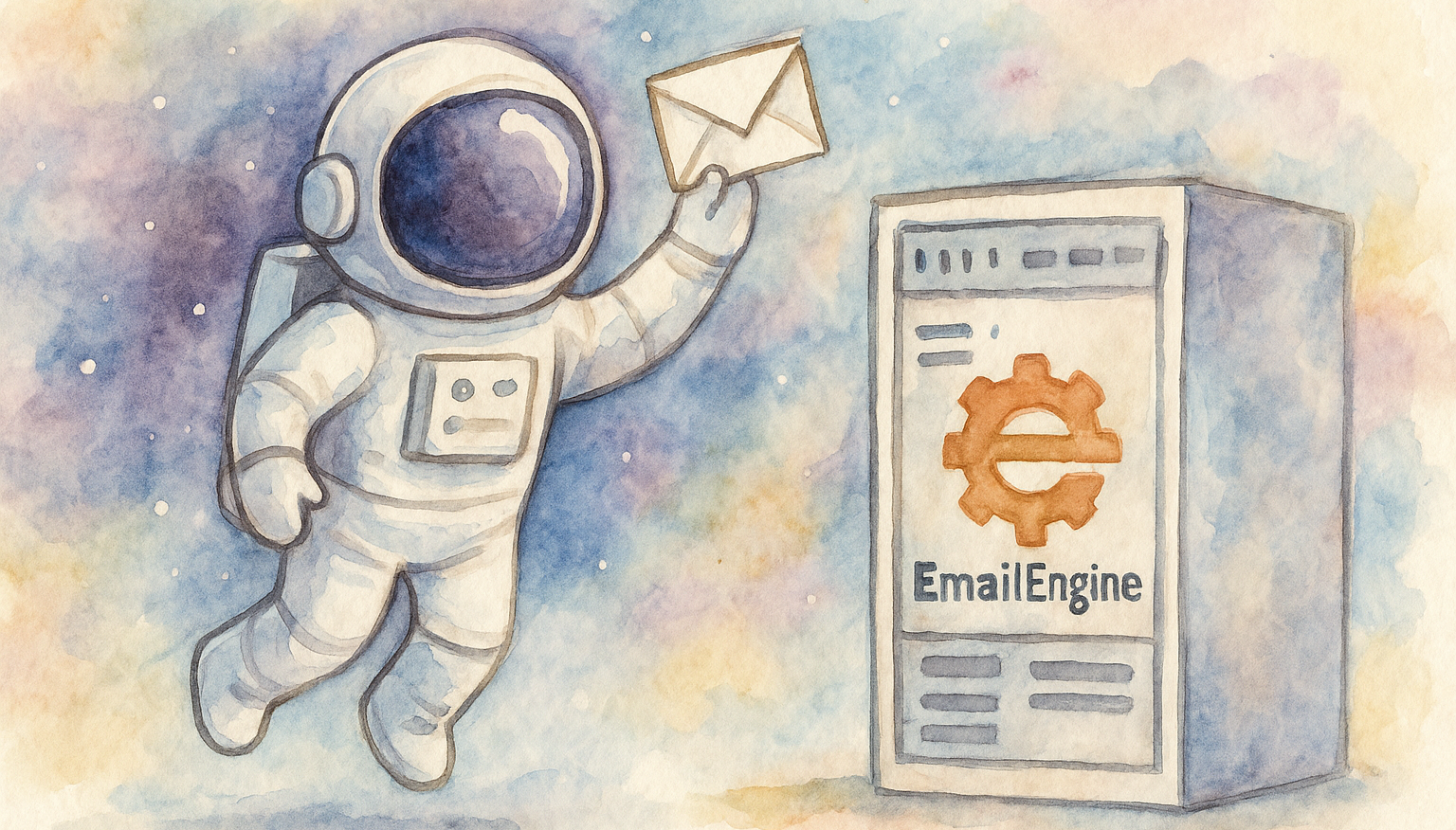EmailEngine, the Nylas alternative for Email API
Both EmailEngine and Nylas spare you from IMAP and SMTP boilerplate by exposing a REST API, but they differ sharply in hosting, data residency, performance characteristics, and pricing. Here’s a developer‑focused rundown, no marketing fluff.

EmailEngine and Nylas Email API both let you interact with email accounts through an HTTP REST API, so you don’t need to worry about IMAP, SMTP, MIME, or other low‑level protocols. Just register the user’s mailbox credentials, and you can list, search, or send email without hassle. Despite that surface similarity, the two solutions take fundamentally different approaches to hosting, data handling, performance, and pricing—differences that can make or break your integration.
Key Differences in Hosting, Data Handling, and Performance
Perhaps the most obvious difference is that Nylas is a fully managed service, while EmailEngine is downloadable software you host yourself. With Nylas, your users’ email flows through Nylas‑controlled infrastructure. With EmailEngine, you manage uptime, server load, and backups. You know exactly where everything runs and how data is stored, though you also shoulder the operational burden.
A more subtle divergence lies in where the raw email data lives. Nylas copies entire messages into its own database, so API calls usually return instantly from that local cache. EmailEngine keeps only a lightweight metadata index in Redis. Each time you request a message body, EmailEngine fetches it on demand from the mailbox. That yields two very different performance profiles:
- Nylas: fast reads, true parallelism, but every message permanently resides in a third‑party cloud.
- EmailEngine: slightly slower first‑time reads and single‑threaded per‑mailbox processing (queued commands), but no third‑party data copy.
When it comes to advanced features, Nylas offers extras like sentiment analysis or flight‑ticket detection. EmailEngine stays minimal—listing, searching, sending, and webhooking. If you need fancy content intelligence, you’ll build it yourself or integrate another service.
Reasons to Consider EmailEngine
- Near‑instant webhooks – No extra sync layer; as soon as the mailbox reports a change, EmailEngine fires your webhook.
- Quick local setup –
$ docker run -p 3000:3000 --env EENGINE_REDIS="redis://host.docker.internal:6379/7" postalsys/emailengine:v2(requires a Redis instance running on the host) gets you a dev instance in under a minute. - Flat, predictable pricing – One yearly license covers unlimited mailboxes and instances.
- Data sovereignty – Email never leaves your network; ideal for GDPR, HIPAA, or fintech constraints.
- Direct line to the maintainer – Bugs and feature requests often land within days.
🛠 Trade‑off – EmailEngine processes one command at a time per mailbox. Fire five parallel requests and the fourth waits until the first three finish. Design idempotent retries.
Reasons to Stick with Nylas
- Zero ops overhead – Scaling, patching, and backups are someone else’s problem.
- Parallel read performance – Cached messages mean concurrent requests don’t hit IMAP rate limits.
- Built‑in NLP add‑ons – Sentiment, categorization, and more are off‑the‑shelf.
- Enterprise paperwork – SOC 2, ISO 27001, and vendor‑risk questionnaires are already handled.
Pricing Comparison
| Category | EmailEngine | Nylas |
|---|---|---|
| Yearly platform fee | $995 flat | Starts around $5,000 (custom contract) |
| Per‑mailbox fee | $0 | ≈ $1 per mailbox / month |
| Hosting cost | You pay VPS / bare‑metal | Included |
| Negotiation | None—public price list | Required; tiered |
Example scenario – 2,000 mailboxes for one year:
- EmailEngine: $995 license + ~$720 cloud VM/Redis ≈ $1,715 total.
- Nylas: $5,000 base + $24,000 mailbox fees = $29,000.
EmailEngine’s flat rate covers everything on the software side; you only pay for servers. Nylas operates on custom contracts with variable mailbox pricing—great for predictable ops, but potentially pricey as you scale.
Bottom Line
If you need a streamlined, on‑premises solution and can handle basic server responsibilities, EmailEngine is likely the most cost‑effective and flexible choice. If you prefer a fully managed platform with advanced analytics and robust parallel performance, Nylas might justify its higher price.

